Coconut coir has become an increasingly popular growing medium over the past decade. Made from the fibrous husks of coconuts, this sustainable and renewable material has proven to be an excellent alternative to traditional soil-less mixes and peat-based products.

In this comprehensive guide, we’ll explore everything you need to know about using coconut coir for hydroponics, container gardening, and soil mixes.
What Is Coco Coir?
Coconut coir, often abbreviated to just coco coir or simply coco, is a natural growing medium made from the fibrous husks of coconuts. It is an incredibly versatile material that has become popular with gardeners and commercial growers alike in recent years.
Coco coir comes from the mesocarp tissue or husk surrounding the internal shell of coconuts. The long, stringy bristles of the husk are processed and sieved to remove excess dust and large particles. What remains is a stable, soilless material with excellent moisture retention, drainage, and aeration properties.

Unlike peat moss which takes centuries to form, coco coir is a renewable, sustainable resource. Coconuts are grown abundantly in tropical regions, making coco coir easily and widely available. It is typically harvested as a by-product of coconut oil production. Coco peat, coco pith, coco dust, and coco chips are all derived from coconut husks.
The main advantages of coco coir include its neutral pH, resistance to compaction and decomposition, and suitable cation exchange capacity (CEC). This makes it ideal for hydroponic systems as well as soilless mixes. Coco coir has high lignin and cellulose content, which gives it a fibrous structure. This adds valuable air pockets when used in growing media.
When coco coir is mixed with compost and other amendments, it creates an excellent potting mix. On its own, coco coir has no nutrient content. But it can hold onto added fertilizers while still draining well and providing oxygen to plant roots. Overall, coco coir offers growers an environmentally-friendly, versatile substitute for peat moss and other non-renewable mediums.
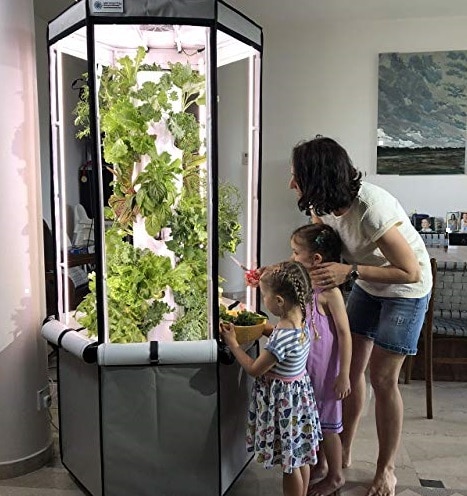
 Aerospring 27-Plant Vertical Hydroponics Indoor Growing System
Aerospring 27-Plant Vertical Hydroponics Indoor Growing System
- Easy to use aeroponic system for your home
- Fan - Grow Lettuce, Herbs, Veggies & Fruits
- Grow smart & eat healthy, 20 gallon water reservoir Grow Tent, LED Grow Lights
Advantages of Using Coco Coir
Coconut coir offers numerous benefits that make it an excellent growing medium. Its unique properties set it apart from other substrates like peat moss and make it ideal for certain horticultural applications.

Some of the main advantages of using coco coir include:
- Retains moisture while still draining well. Coco coir has excellent water retention capabilities due to its high lignin and cellulose content. Yet it still promotes suitable drainage and air circulation. This moisture-retentive but well-aerated structure provides an ideal environment for healthy root development. Roots get consistent moisture without risk of oversaturation.
- Resists compaction for better structure. Coco coir maintains its loose, friable structure and does not easily compact over time. The stable fibrous nature resists compression from repeated watering. This prevents suffocation of plant roots, which need pore space for air. Avoids problems like reduced drainage and poor soil oxygenation caused by compaction.
- Neutral pH beneficial for plants. Coco coir has a near neutral pH range of 5.2 to 6.8 out of the bag. This pH is suitable for most plants without needing adjustment. It does not acidify or alter pH over time, as some substrates can. The neutral coco coir pH provides a nontoxic, stable environment for plants to thrive.
- Sustainable and renewable resource. Coco coir is a recyclable, renewable byproduct of coconut harvests. It is reused and produced sustainably without depletion of resources. Using coco coir reduces demand and ecological impact of peat harvesting. Abundant raw coconut husks make coco coir much more sustainable than finite peat supplies.
- High cation exchange capacity. Coco coir has suitable cation exchange capacity (CEC) to store and release nutrients to plant roots. Its CEC is higher than peat and comparable to soil. This allows coco coir to hold onto nutrients from fertilizers. Plants can then take up nutrients effectively as needed.
- Resists decomposition and lasts longer. Coco coir maintains its structure and integrity for years without rapidly breaking down. The fibrous husk material is slower to decompose compared to peat. Coco coir retains its form and does not shrink, unlike peat which decomposes. It remains stable over multiple grow cycles.
Drawbacks of Growing in Coconut Coir
While coconut coir certainly has its advantages, there are also some potential drawbacks to consider when using it as a growth medium. It’s important to understand the limitations of coco coir to make sure it aligns with your specific gardening needs and preferred practices.
Some of the main disadvantages or challenges of growing in coconut coir include:
- Requires addition of nutrients. Coco coir has no inherent nutritional value and does not contain any macro or micronutrients. Fertilizers need to be added and managed when growing in coco coir. Growers must provide adequate calcium, magnesium, and potassium, which coco fiber naturally lacks. Requires more attentive nutrient management than soil or peat-based mixes.
- Can be cost prohibitive. Coco coir is typically more expensive upfront compared to buying regular potting soil or peat moss. The initial investment deters some smaller-scale growers from choosing coco coir. Larger bales are more cost-effective but still expensive for hobbyists. The price may come down as it gains popularity and production expands.
- Retains too much moisture for some plants. Coco coir’s high water holding capacity can lead to oversaturation for plants that need quick drainage. Roots of succulents and cacti may stay too wet in straight coco fiber. Requires amending with perlite or sand for good aeration for some species.
- Can be challenging to rewet if dried out. Coco coir repels water once it has completely dried out due to its hydrophobic fibers. Rehydrating brick coco requires pre-soaking to saturate again. Dried out coir resists rewetting and can become water-repellent. Avoid letting coco coir dry out completely between waterings.
- Potential salinity issues. Some coco coir contains naturally high salts that can accumulate over time with repeated fertilization. This may require leaching to avoid salt buildup to toxic levels for plants. Excess salts can stunt growth and damage roots if allowed to accumulate. Test EC and leach regularly to prevent saline conditions.
- Varying quality and consistency. Coco coir quality depends heavily on processing and the source materials. It can vary between batches in terms of purity, texture, salt content. Lower quality coco may have excess splintered fibers. Consistency issues make standardized growing practices difficult.
- Not a standalone medium. Coco coir lacks the complete nutritional balance and structure for plants on its own. It performs best when blended with other amendments like compost or perlite. Using 100% coco fiber is generally not recommended. Optimal as a component of a custom mix.
Major Types of Coco Coir
Coconut coir products can be processed into different forms and textures to suit various growing needs. The major types of coco coir available include:
- Coco peat. It is made from the finer, denser dust particles of the coconut husk. It has excellent water retention and cation exchange capacity. Coco peat provides very fine texture and uniform structure. Best used for propagating seeds, rooting cuttings, and in potting mixes.
- Coco coir pith/coco dust. Pith and dust come from the inner fibrous & powdery material between husk fibers. It has high lignin and cellulose fiber content. Adds airspace and drainage when blended into soil mixes. Avoid 100% coco pith or dust which retains too much moisture on its own.
- Coco chips/coco chunks. Coarser strands of coconut husk are processed into chips and chunks. Provide larger air pockets for aeration and drainage. Help prevent compaction and retain shape in container gardens. Useful amendment for heavy, dense soils to lighten texture.
- Coco fiber/coco coir bricks. The longest fibers of coconut husk form dried bricks or blocks. Must be soaked before use to expand and rehydrate. Retains moisture well while still promoting airflow. Used alone or blended into other potting mixes and hydroponic mediums.
- Buffered coco coir. Coco coir that is pre-treated to wash salts and adjust pH to an optimal range. Reduces need to pre-soak and pre-buffer coco before use. More beginner-friendly, but costs slightly more. Excellent for seed starting and transplants.
- Coco loco. This is a specific brand blend combining coco coir, compost, perlite, mycorrhizae. Designed as an all-in-one potting mix. Nutrient-rich organic blend supports biological activity. Resists compaction and decomposition better than plain potting soil.
- Coco & perlite mix. Combining coco coir with perlite creates an aerated, fast-draining blend. Perlite provides more air pockets and drainage capacity. Helps prevent overwatering sensitive plants. Must still be fertilized, but resists compaction.
- Hydroponic coco coir. Coco coir, designed for hydroponic systems. Typically, pre-washed for lower EC and neutral pH levels. Rinsed of excess salts and ready for balanced hydroponic nutrient solutions. Retains oxygen and moisture levels optimal for raft systems.
What Will You Need for Growing with Coco Coir?

Growing cannabis with coco coir as a medium can be easy and rewarding if you have the right supplies. Coco coir provides an ideal environment for healthy root growth and nutrient uptake.
Coco Coir
Coco coir is the main grow medium, made from the fibrous husks of coconuts. You’ll want to choose a high-quality coco coir product specifically formulated for hydroponics. Look for coco that has been pH adjusted and pre-buffered. You can buy coco coir in blocks, bags or loose. It’s essential to properly buffer and rinse the coco before using it.
When preparing coco coir, you’ll need to thoroughly hydrate it and adjust the pH to an optimal range. This helps remove any built-up salts and brings the medium to the right acidity level for healthy roots and nutrient absorption. Use pH corrected water and a buffering product like calcium nitrate when hydrating your coco.
Pots
Grow pots designed for hydroponics work best with coco coir. Look for containers that are wide and shallow, which promotes healthy root growth with coco. Smart pots made of fabric are a popular choice, as are air pots with holes along the sides. Make sure there are plenty of drainage holes in the bottom to prevent waterlogging.
For each plant, choose a pot size appropriate for its expected mature size. Bigger pots mean bigger plants and bigger yields but require more water and nutrients. Start seedlings or clones in smaller containers and transplant to larger pots as they grow.
Water and Nutrients
Coco coir has high cation exchange capacity, meaning it retains nutrients well. You’ll need to provide a complete hydroponics nutrient solution with all essential elements. Look for a quality brand of coco nutrients specifically formulated for the medium.
Since coco coir is an inert medium with no inherent nutrients, your plants will rely completely on what you provide. Use pH corrected water and test/adjust nutrient pH to 5.5-6.2. Coco typically requires more frequent watering and feeding than soil. Establish an irrigation schedule based on plant needs.
A Guide for Growing with Coco Coir
Growing cannabis with coco coir as your medium opens up an exciting way to cultivate lush, high-yielding plants. While it requires some specific steps compared to soil, following proper techniques with coco can lead to excellent results.
Rehydrating Coco Coir

Before using coco coir for planting, it must be thoroughly rehydrated. Always start with a buffered coco product specifically for hydroponics. To rehydrate, drench blocks or loose coco in pH adjusted water over a period of several hours, allowing time for full absorption.
Test the runoff pH and continue rinsing if needed until you reach the desired pH range. Let the coco drain before packing pots. Proper rehydration washes away any salts and brings coco to the ideal pH for planting.
Packing Pots
After hydrating coco coir, lightly pack it into your grow pots. Pack loose coco coir tightly enough, so there are no large air pockets, while still allowing room for plenty of air circulation. With coco blocks, break up any hard sections first.
Pack the coco into pots up to about 2 inches below the rim. This leaves headspace to easily water while preventing overflow. Make sure coco is evenly distributed and level across the container. Pack gently to prevent excessive compaction.
Transplanting Plants

When transferring plants from germination or small starter containers into larger pots of coco coir, take care to minimize root disturbance. Gently loosen the root ball before transplanting into the new medium.
Partially fill the pots with fresh coco coir first. Place the plant in the center, positioning it at the same level it was growing at before. Surround the root ball with more coco, gently tamping it down. Water thoroughly after transplanting to coco coir.
Useful Tips When Using Coco Coir
When gardening with coco coir, there are some helpful strategies and best practices to follow. Learning how to properly prepare, amend, water, and reuse coco coir will ensure you get the most out of this versatile growing medium.
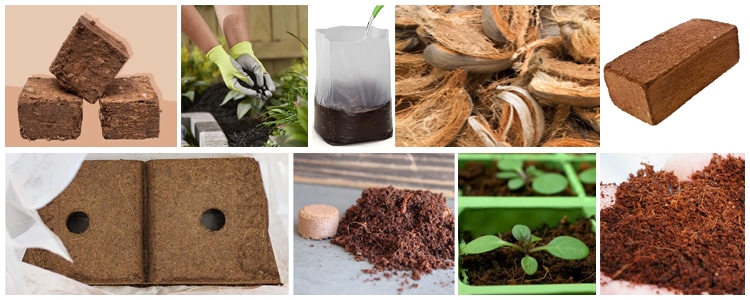
Use this tips for success with coconut coir:
- Rinse and buffer dry coco coir before use. Soak compressed bricks in water to fully expand and rinse away excess salts. Consider “buffering” with calcium and magnesium to stabilize pH levels. Pre-rinsing and buffering optimizes coco coir’s growing performance.
- Look for washed, buffered coco coir products. Seek out high-quality coco coir that is pre-rinsed and buffered for convenience. More expensive but avoids extra preparation steps. Ideal for beginners or seed starting when pH is especially important. Saves time and ensures consistent results.
- Use fans to keep air moving over plants. Coco coir when moist holds onto air less than other soilless mixes. Circulating fans prevent stagnant, overly humid air around plants. Maintains adequate air exchange to plant roots and foliage. Avoid mold, mildew, and pest issues with proper airflow.
- Amend coco coir for customary blends. Mix with compost or worm castings to add nutrients for plant uptake. Combine with perlite or vermiculite to improve aeration for some plants. Creates optimal growing medium tailored to specific plants or environments.
- Add balanced fertilizer with each watering. Coco coir has no nutritional value and requires regular fertilizer application. Use hydroponic formulas or calcium-magnesium balanced mixes. Avoid buildup of excess salts by flushing the medium regularly. Fertilize lightly more often, rather than heavy single doses.
- Avoid overwatering or drying out completely. Find the ideal moisture balance for chosen plants. Both excessive moisture and severe drying are detrimental. Use moisture meters to gauge water needs precisely. Rehydrate dried coco coir by pre-soaking before reusing.
- Rinse recycled coco coir to remove salt buildup. Reusing coco fiber allows salt accumulation without flushing. Rinse old coco thoroughly before mixing into new media. Discard coco if EC rises too high over repeated uses. Refreshing recycled coir maintains quality.
Best Plants for Growing with Coco Coir

Coco coir is versatile enough to grow a wide variety of plants, but some species benefit most from its unique properties. When optimizing coco coir with proper amendments and care, these plants tend to thrive best:
- Herbs and vegetables. The moisture retention yet air porosity of coco coir suits most herbs and vegetables well. Ideal for plants like lettuce, tomatoes, peppers, and cucumbers. Stronger plants like rosemary and thyme thrive with proper fertilization. May need some perlite for species requiring fast drainage.
- Cannabis and hemp. Coco coir has become a top choice for growing cannabis and hemp. Provides the perfect balance of air, moisture, and support that cannabis roots need to thrive. Easier to manage optimal environmental conditions compared to soil. Reusable over multiple grow cycles.
- Orchids and air plants. The excellent drainage and porous structure of coco coir works well for epiphytic orchids. Allows oxygen to reach orchid roots while still providing moisture. Use fine coco fiber for mounting or in orchid containers. Also, suitable for air plants like tillandsia that need air flow.
- Succulents and cacti. Requires amending with extra perlite or coarse sand to prevent overwatering. Provides steady moisture at low levels required by succulents and cacti. Too retentive on its own for these drought-tolerant species. Makes an excellent blend customized for desert plants when modified.
- Seed starting mixes. The small particle size, moisture retention, and mild pH of coco coir lends well to starting seeds. Allows delicate roots to develop without compaction issues. Can be used alone or blended into seed starter mix. Just ensure adequate drainage with perlite in the blend.
- Palm trees. Coconut coir provides the ideal environment for healthy palm growth. Moisture-retaining yet porous to allow needed airflow to roots. Does not compact over time like heavier soils. Useful for indoor palms as well as tropical outdoor varieties.
- Berries and vines. The soil structure provided by coco coir increases drainage for berry bushes and vining plants. Allows air to permeate soil but retains enough moisture between waterings. Great for strawberries, blackberries, grapes and other fruits grown on vines.
- Flowering annuals and perennials. The neutral pH and excellent water retention make coco coir suitable for most flowering annuals and perennials. Retains moisture longer than typical potting soil. Just monitor drainage and aeration needs for different species.
FAQ
What is the composition of coco coir?
Coco coir is made up of the fibrous material on the outside husk of the coconut. It contains high amounts of lignin and cellulose, which gives coco coir its fibrous, stringy structure. The main components are:
- Cellulose - 36%
- Hemicellulose - 29%
- Lignin - 21%
- Ash - 8%
- Moisture - 8%
- Soluble solids - 6%
The lignin and cellulose provide stability and resistance to decomposition, while the ash contains essential minerals. The moisture helps coco coir retain water while still allowing airflow.
How to amend coco coir with nutrients?
Since coco coir has no inherent nutrients, it needs to be amended to provide proper nutrition to plants. This can be done by mixing in thoroughly composted manure or worm castings prior to planting. The compost introduces beneficial microbes and slowly releases nutrition as it breaks down. Adding a complete organic granular fertilizer when preparing containers also works well.
How to maintain coco coir moistured?
Keeping coco coir adequately moistured without oversaturation takes a bit of monitoring and care. When the top few inches of the medium become dry, coco coir should be thoroughly watered until a little drainage comes out the bottom. This ensures full moisture penetration into the root zone. Adding moisture retaining polymers like cross-linked polyacrylamide crystals helps coco coir hold onto more water before drying out.
Is daily watering necessary for coco coir?
Daily watering is usually not necessary for coco coir alone. With proper amendments like compost and polymers added, coco coir can retain moisture 2–3 days without watering. However, it depends on variables like plant size, weather, and container type. Small containers and seedlings may need daily moisture. Monitor soil consistently to determine specific needs.
What is the ideal flush duration for coco?
Flushing coco coir every 2–4 weeks is recommended, with a flush duration of 10–15 minutes being ideal. Flushing leaches any built up salts and replaces stagnant nutrient solution held in the medium. Use pH adjusted water that's 50-100 PPM lower strength than regular feeding. Aerating the coco for 24 hours after flushing is also beneficial.
Is coco coir superior to soil for cultivation?
Coco coir has some advantages over soil like better aeration, cation exchange capacity, and consistency. However, soil's nutrients and microbial life can be superior to coco coir in some cases. For certain plants like orchids, cannabis, or vegetables, the properties of coco coir make it a better choice over plain soil. But for other species, soil may provide better results.

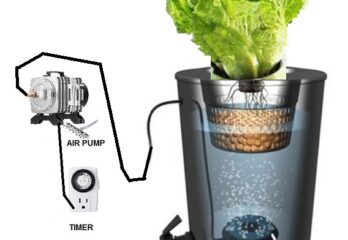


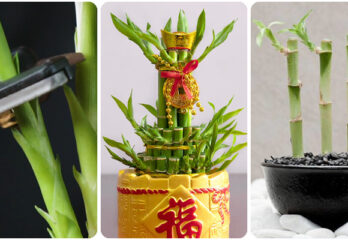

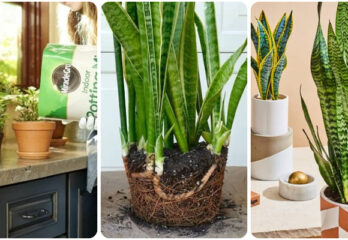
Leave a Reply